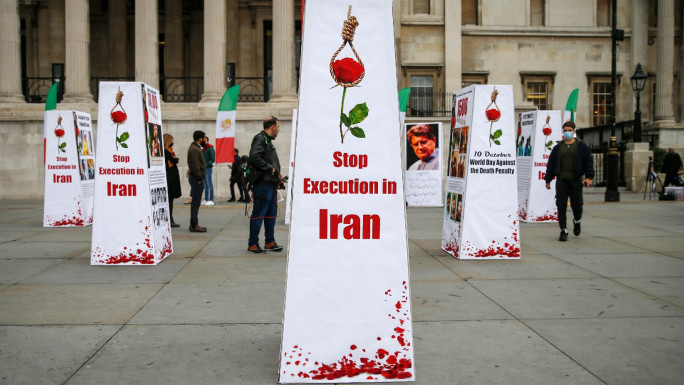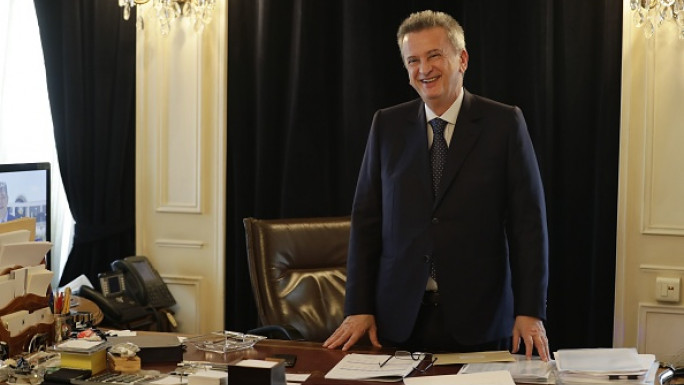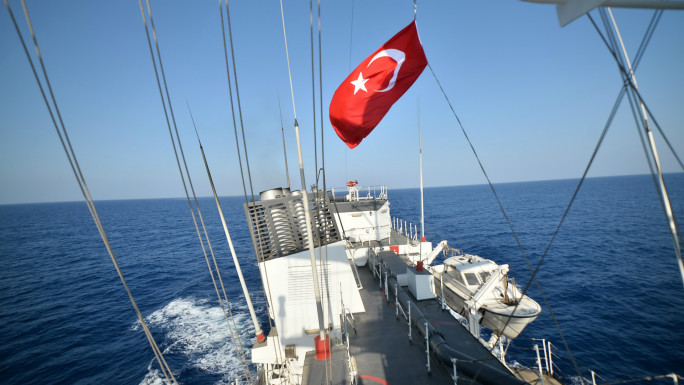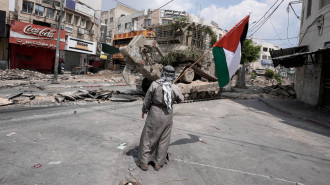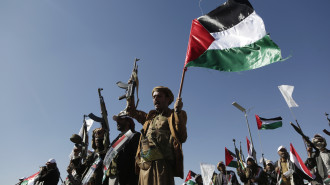
The Paris Olympics refugee team is a reminder of Iran's brain drain crisis

In every Olympic Games since 2016, a team of athletes who fled their home countries competes as part of the Refugee Olympic Team.
This year, of the 37 athletes joining the games under the Olympic flag, nearly half - 14 - fled from just one country: Iran.
Among them is refugee Hadi Tiranvalipour, the champion martial artist who left Iran in 2022. Tiranvalipour was a member of Iran’s national taekwondo team for eight years before he fled the Islamic Republic.
Then there’s up-and-coming Iranian weightlifter Yekta Jamali Galeh, who was celebrated by Iranian media after she won the country its first-ever medal in women’s weightlifting in the 2021 junior championship. She claimed asylum in Germany in 2022.
Whether in weightlifting, canoeing, taekwondo, or judo, Iran’s top athletes are leaving the country. The Iranian dominance of the Refugee Olympic Team, then, is a stark reminder of a subtle crisis gripping Iran: brain drain.
It is perhaps no surprise that top-flight athletes are leaving Iran en masse. Several prominent athletes in the country have been executed or gone missing in recent years. But the problem extends far beyond sports.
Since 2015, over 377,000 Iranians have claimed asylum abroad. Tens of thousands more are expected to flee this year. Asylum seekers are just the tip of the iceberg.
While estimates vary, research suggests that at least 2.6 million - and potentially as many as six million - Iranians now live abroad.
In the years following the overthrow of the Shah’s regime in 1979 and the war with Iraq, as millions of Iranians fled, then-leader Ayatollah Khomeini disregarded the significance of mass emigration. “They say there is a brain drain. Let these decayed brains flee … Let them flee. They were not scientific brains,” he said.
But today, leaders in the country are markedly more concerned, not least because many of those people fleeing are indeed the “scientific brains” Khomeini was referring to.
Research by the Stanford Iran 2040 project found that 100,000 Iranian researchers have worked in foreign universities and research institutions. That’s one-third of Iran’s overall human capital in research. For students, the country’s future human capital, 130,000 - the highest figure ever - are currently studying abroad, with just 10% expected to return.
“The short-term impact is getting worse and worse. [Iran] is dealing with shortages in doctors, shortages in nurses,” Matin Mirramezani, a researcher at Stanford University’s Iran 2040 project, told The New Arab.
Iranian media reported that 6,500 doctors including 2,300 highly trained specialists left the country in 2022 alone - 30% more than the annual number of new doctors joining the profession, according to Iran Open Data.
For nurses, a similar phenomenon is taking place. According to a study published in the Lancet journal, during the first year of the Covid-19 pandemic, the rate of immigration requests from nurses increased by 300%.
That 2022 study found that the ratio of nurses per hospital bed sits at between 0.8 to 1 nurse per bed - far below the global standard of three nurses per bed. This has a tangible effect on the quality of care patients receive, extending waiting times for operations and endangering lives.
Emigration is harming Iran’s long-term prospects, Matin explained. “You’re seeing highly educated people, who can build infrastructure in engineering, in computer sciences, leave. The loss of those people is going to be immediately felt.”
|
|
He continued: “The long-term impact is that Iran is making these massive investments in educating this population that is key in driving economic growth - they’re going to be entrepreneurs, educators, or resources for building the country - and these people are just leaving. It’s going to slow the economy”.
Massaab Al-Aloosy, Senior Non-Resident Fellow at the New Lines Institute for Strategy and Policy, told TNA that there are two leading causes of the brain drain in Iran. “The economic hardship that many Iranians are facing because of the sanctions imposed on Iran, that is a direct cause of its foreign policy, and limited freedoms which Iranians have been craving for decades,” he said.
“These two factors are leading many Iranians, especially those that are able to migrate to other countries because of their graduate degrees or wealth, to leave their country behind.”
Iranian authorities are not blind to this crisis. In early 2024, a senior official of Iran’s National Elite Foundation -established in 2005 to manage the country’s scientific and academic elite - announced an “understanding” with the police to deal with immigration offices facilitating emigration and prevent “elite organised migration”.
The government has also been taking measures to entice Iranians abroad to return home, offering a platform for them to come back safe in the knowledge they won’t be treated as foreign spies.
But these measures are unlikely to have the desired effect, says Al-Aloosy. “The government needs to make tangible changes, creating a better environment for Iranians that makes life more attractive within Iran rather than outside it. This means shifting its foreign policy to have the sanctions lifted and allow for more freedoms within the country; however, change in either is unlikely for the foreseeable future.”
Another sector less widely covered is also experiencing its own brain drain: arts and culture.
“Many artists, whether singers, writers, actors are subjected to close scrutiny, and ultimately, censorship by the government,” Persis Karim, Chair of the Center for Iranian Diaspora Studies at San Francisco State University, told TNA.
“Artists are to a great extent seen as a threat because they challenge the government's stranglehold, in a number of ways, whether through images, words, songs, and express a desire for freedom, particularly from the laws that govern women's bodies.”
A spate of high-profile arrests have been made of Iranian artists in recent years. Toomaj Salehi, a popular rapper, was sentenced to death for criticising the regime before it was later overturned. Singer Shervin Hajipour - who recorded the song that became emblematic of the Woman, Life, Freedom protest movement that gripped Iran in 2022 - faces prison for his work.
In June this year, cartoonist Atena Farghadani was jailed for six years after attempting to display a painting publicly on charges of “blasphemy” and “propaganda against the regime”.
Iranians contact Karim regularly seeking to study in the US as a means to leave Iran.
“It is largely because they don't feel they have much sense of their own future in Iran based on the Islamic Republic's intransigence, its persecution of activists and artists, and the repressive conditions.”
Chris Hamill-Stewart is a freelance journalist and writer specialising in the business and politics of the Middle East and the Islamic world. He speaks regularly on current affairs in the UK.
Follow him on Twitter: @CHamillStewart



